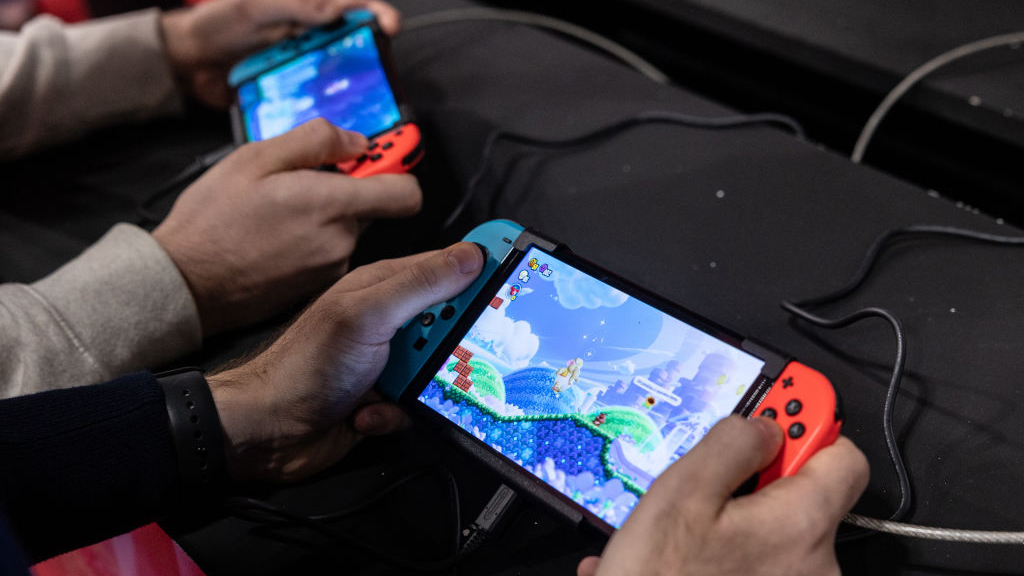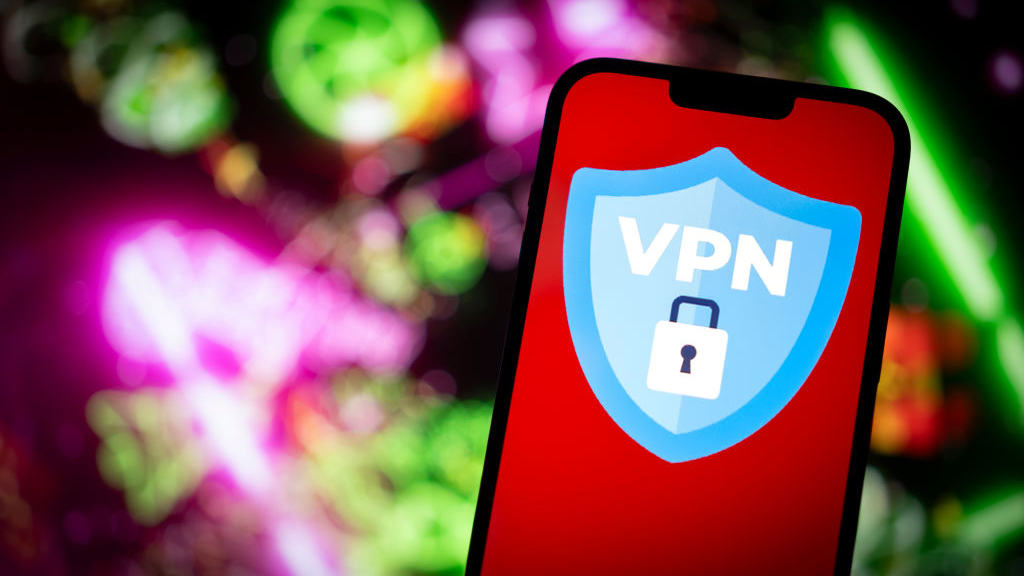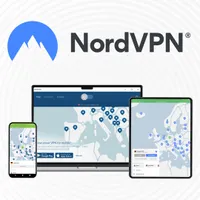4 reasons why a VPN for the Switch 2 might be a bright idea
From security to speed – level up your play with a VPN for the Switch 2

The Switch 2 has officially landed on physical and digital shelves, and gamers everywhere are clamouring to get their hands on the latest Nintendo device. Before you get thrashing your friends at Mario Kart World, spare a thought for security. We have four good reasons why you might want to install a VPN on your Switch 2.
VPNs are handy software tools that give your digital privacy a significant boost, and can even improve your performance in online play.
Unfortunately, the Switch 2 doesn't come with native support for VPNs. You can't just download a gaming VPN app directly but there are workarounds. So, is it worth going the extra mile to use a VPN with the Switch 2? We think so.
NordVPN – The best VPN overall
NordVPN is our go-to recommendation for gamers. For starters, it’s wickedly fast, ensuring that you won’t have to deal with ISP throttling while battling it out online in Smash. Plus, with servers in 118 countries to choose from, you’ll have your pick of content from all over the world. NordVPN has sleek and simple apps available for all platforms, too, including other gaming consoles, and only takes a minute to set up. Check it out today, risk-free, with a 30-day money-back guarantee.
Can you use a VPN with the Switch 2?
Yes, but it’s not as straightforward as using a desktop or mobile VPN.
Like we say, it's not possible to download a VPN app directly using your Switch 2 – and this was the same with its predecessor, the original Switch.
Instead, you'll need to start by either setting up a virtual hotspot with a Windows or Mac machine (or a mobile device) or investing in a VPN router. We’ve included step-by-step tutorials for both methods later in the article.
Reason #1: Expand your access
One of the main reasons why VPNs are so popular today is their ability to spoof your virtual location. When you connect to a VPN server in a different country, the sites and apps you use will think that you’re physically there, too.
As a result, you’ll see content specific to that region – which comes in handy if you’re an avid streamer and plan to use your Switch 2 as a portable cinema, or if you have an overseas vacation coming up and want to retain access to your favorite shows or sports from back home.

We've put dozens of VPNs to the test to figure out which ones work best with Netflix. Head on over to our guide to the best Netflix VPNs to see which services make the cut.
With one of today’s best streaming VPNs, you can location-hop to explore region-specific content libraries on Netflix, Prime Video, and more. The same applies to apps and games, too, which might be restricted to certain countries.
It is worth keeping in mind that using a VPN to access restricted content carries some risks, and might be against the terms of service for the platform, app, or game. Always check the small print!
Reason #2: Prevent DDoS attacks
DDoS attacks are the bane of any gamer’s existence – especially if you’re into competitive online titles and have a lot on the line. Getting booted off the game when you’re in a tournament or on a real hot streak is a serious buzzkill, but a secure VPN can help put a stop to these attacks (and thwart the sore losers behind them).
How? Well, it’s all down to VPN encryption. Connect to a server, and the data leaving your device is routed through a secure tunnel where it’s concealed from prying eyes. Plus, you’ll be assigned a new, temporary IP address.
Combined, this makes it a lot harder for hackers to target you with a DDoS attack. Even if they take aim, they’ll be targeting the VPN server, not you, specifically.
VPN servers tend to be more resilient to DDoS attacks, thanks to their bigger infrastructure, larger networks, and dedicated support staff. Even in the worst-case scenario where a VPN server is knocked offline, you're usually able to reconnect in a matter of seconds through another server in the same location. A particularly powerful DDoS attack may knock you from a gaming session entirely but, on the bright side, it won't keep you off the internet for hours in the same way as it would if you were relying on your regular internet connection.
The caveat here is that a VPN won’t help if a DDoS attack is currently underway or, in the worst-case scenario, if a bad actor already knows your original IP address.
Reason #3: Stay secure on public Wi-Fi
One of the best things about the Switch 2 is that it’s portable, meaning you can take your gaming and browsing with you on the go, whether you’re living it up on vacation or killing time on the daily commute. However, free Wi-Fi hotspots are notoriously unsafe.
This is because they tend to lack the same security features as the Wi-Fi you use at home – they’re often unencrypted. So, anyone with the time and inclination could intercept your connection and data, or sniff out vulnerabilities to exploit and lump you with a nasty virus or other malware.
VPN encryption ensures that your data and online activity remain hidden from snoopers and hackers
Worse yet, some bad actors go as far as to create their own bogus Wi-Fi hotspots and name them something convincing in the hopes that you won’t think twice about joining them. If you do, however, you’ll be allowing the bad actor to see everything you do and input – including personal and financial details which they could use to launch phishing attacks or even conduct identity theft.
Luckily, VPN encryption ensures that your data and online activity remain hidden from snoopers and hackers. If you’re connected to a VPN and join a fake Wi-Fi hotspot, the hacker behind it won’t be able to paw through your data, as it’ll be rendered unreadable by the VPN.
Reason #4: Take control of your gaming
Today’s fastest VPNs come stuffed with handy tools designed to give your digital privacy a boost and, hopefully, improve the overall performance of your online activity – and the Switch 2 can take advantage of these, too.
If speed is everything to you, and it often is to gamers, then you’ll be glad to learn that connecting to a VPN server in close geographical proximity to the gaming server can help reduce lag. Shortening the journey your data has to make can squash in-game delay, giving you an edge over the other players in your lobby.

Wondering how VPNs do their thing? Check out our jargon-free guide to how VPNs work.
VPNs can also prevent ISP throttling – the unseen enemy of the gamer. This throttling happens when your ISP takes a look at how you’re using your bandwidth and decides that you’re consuming too much, maybe by streaming or gaming online, and hits the brakes on your performance to shape their overall traffic usage.
Because a VPN encrypts your traffic and renders your activity unreadable, your ISP won’t be able to see what you’re up to and make any throttling decisions on that basis. You’ll enjoy a smoother performance and a ping that remains stable.
How to set up a VPN with the Switch 2
As we mentioned earlier, using a VPN with the Switch 2 takes a bit more than just downloading an app and punching in some login details. There are two methods we’d recommend to get a VPN set up on your Switch 2: create a virtual router on a Windows or Mac machine (or even your mobile device), or buy a VPN router.
VPN router
This is the easiest method and comes with several benefits – the biggest and best is that, with a router VPN, you’ll automatically extend VPN protection to any gadget that connects to the router. This includes your new Switch 2!
- First, pick out a VPN. We rate NordVPN as the best. You’ll then need to subscribe to a plan and create an account.
- The next step is to invest in a VPN router or set up a VPN on a compatible router.
- Connect the VPN to the server location of your choice.
- Finally, boot up the Switch 2 and connect to the VPN router, and you’re ready to go!
Virtual hotspot
Setting up a virtual router on a Windows 11 machine or Mac takes a bit more time and know-how, but it’s not a techy nightmare.
Windows
- Take your pick of VPNs, subscribe, and create an account.
- Download the Windows VPN app and log in.
- Choose a VPN server to connect to.
- Open the Settings menu and select Network Connections.
- Hit Mobile Hotspot, and enable it.
- Next, click Network & Internet, then Change Adapter Options
- Find your VPN in the list and give it a right-click, and then select Properties
- Click Alow Other Network Users to Connect
- On your Switch 2, select the Wi-Fi hotspot and connect, and you’re all set.
Mac
- You know the drill – choose a VPN, pick a plan, and create an account.
- Download the Mac VPN app and log in.
- Choose a VPN server and connect to it.
- Using a cable, connect your Switch 2 to the Mac.
- Head to System Settings and find Select Internet Sharing
- Click Share your Connection From, then Wi-Fi
- Find your Switch 2 under To Devices Using
- Boot up the Switch 2, then head to Internet and Internet Settings to find the new Mac network
- Connect, and it’s as easy as that!

River is a Tech Software Editor and VPN expert, helping take care of cybersecurity content on TechRadar, ranging from reviews, buying guides, and must-have VPN deals. River's expertise in the cybersecurity field opened their eyes to the startling amount of online snooping we accept into our daily lives. Now, River is committed to fighting for your right to digital privacy by shining a light on its biggest threats – and helping readers safeguard their data with the help of a VPN. Surfshark is River's favorite VPN, and they use it every day to keep their most sensitive details out of the hands of third-party trackers.
You must confirm your public display name before commenting
Please logout and then login again, you will then be prompted to enter your display name.
